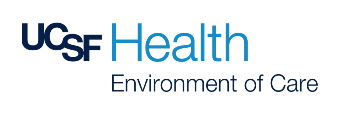Fire drills are a regulatory requirement, but more importantly they serve to prepare and educate staff in the event of a fire. In a fire, time is one of the most important factors affecting the outcome of building occupants. Participation in fire drills helps ensure that all staff respond quickly and appropriately. Fire drills are routinely reviewed to ensure that opportunities for improvement are identified and addressed. Any equipment and system problems or failures are reported immediately for correction by Facilities Management.
Healthcare and Ambulatory Occupancies
A healthcare occupancy is a building or portion of a building used on a 24-hour basis for the housing and nursing care of four or more persons who are incapable of self-preservation under emergency conditions without the assistance of others. These locations include the Mission Bay Adult and Children’s Hospitals, Moffitt-Long Hospital, and Mt. Zion Hospital.
Ambulatory occupancies are areas used to provide services or treatment simultaneously to four or more patients on an outpatient basis where patients are incapable of self-preservation under emergency conditions without the assistance of others. Locations under this category include the Ambulatory Care Center at Parnassus, Gateway Medical Building at Mission Bay, 1600 Divisadero Street, 499 Illinois Street, 1500 Owens Street, and 1675 Scott Street.
Fire drills at these locations are conducted at least once per quarter, per shift.
Business Occupancies and Off-Campus Leased Spaces
Business Occupancy is a building or portion of a building used to provide medical treatment or services for less than 24 hours. The facility does not provide sleeping accommodations or anesthesia and patients are mostly capable of self-preservation. Drills are required at least once per year, per shift at these locations.
Depending on occupancy, fire drills may include any or all of the following elements:
- Simulated and/or actual removal of patients, staff and visitors from affected area
- Fire alarm activation
- Reporting event by calling 911
- Overhead page announcement
- Response from Engineering and Security
- Fire and smoke containment observations
- Review of evacuation procedures
- Fire suppression procedures
- Implementation of area-specific fire response duties
- Post drill evaluation and discussion
